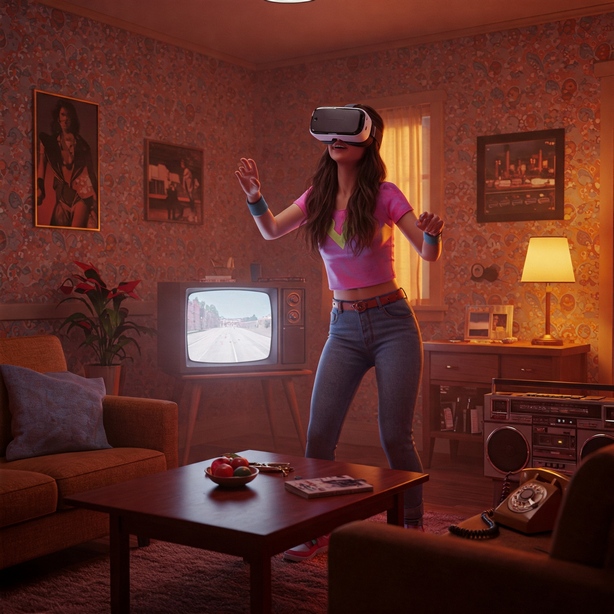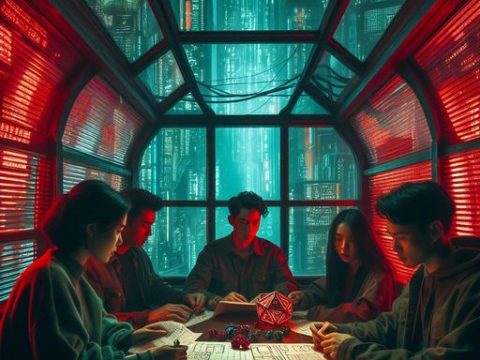Interactive cinema is a fascinating realm where the boundaries between viewer and creator, story and experience, are constantly being redefined. The very concept of “interactive cinema” is like a living organism: it breathes technological innovation, changes under the influence of new media forms, and adapts to the expectations of an audience that increasingly wants not just to watch, but to participate. This relentless dynamism of definitions is particularly highlighted when we draw parallels between the modern state of virtual reality (VR) and the atmosphere that prevailed in the video game industry of the distant 1980s – parallels that Tim Cain aptly points out in his reflections.
Why is it so difficult to give interactive cinema one, cast-iron definition? The answer lies in its very nature, which is closely intertwined with technological progress. Each new turn in the development of video, computer technologies, or means of interaction opened new doors for experimentation. Starting from early attempts like “Kinoautomat”, where the collective vote of the audience determined the plot twist, and up to today’s complex VR projects that immerse us in completely interactive worlds, technology has always been a catalyst for change. This is not just a change of tools; it is a fundamental transformation of the role of the viewer. From a passive consumer of content, he turns into an active participant, a co-creator of the story, whose decisions have a real impact on the narrative. Such a transition from simple viewing to deep “experience” and “participation” is the core of interactive cinema.
Moreover, the very definition is blurred by the merging of different media forms. Many modern projects that we could attribute to interactive cinema are actually hybrids, borrowing elements from both cinema and video games. Such works, where the viewer-player makes a choice that affects the branched story, demonstrate how arbitrary traditional genre frameworks become. Interactivity itself can take on many forms: from a simple choice of a dialogue line to complex physical interactions in a virtual space. Therefore, “interactive cinema” today is rather a wide range of experiences that are constantly being enriched, and its definition remains open, ready to accept future innovations.
It is especially interesting to look at this process of evolution through the prism of Tim Cain’s words about the video game industry of the 1980s. His observations amazingly resonate with the modern state of virtual reality technology. Cain mentions how in the 80s, video games were something new, the market was fragmented, and the games themselves and the equipment necessary for them were quite expensive, requiring certain technical knowledge. Don’t we see a similar picture today with VR? The technology is still looking for a way to the mass consumer, various VR platforms compete with each other, and the cost of headsets and powerful computers remains a significant barrier for many.
Cain also touches on an important aspect of “content”. In the 80s, according to him, not so many games were released, and players immersed themselves in each of them for a long time. The modern VR industry, despite technological breakthroughs, is still feeling the lack of that very “killer app” – a project that would make millions of people buy a VR headset. Often the emphasis is on the technology itself, its capabilities, sometimes to the detriment of the depth of the narrative or gameplay – similar “childhood diseases” were once experienced by the gaming industry, up to the infamous market crash in 1983, partly caused by the oversupply of low-quality products.
And finally, the search for its audience and optimal forms. Tim Cain noted that in the 80s, the entertainment industry began to actively focus on a new demographic group – teenagers. Virtual reality today is also at this stage of self-determination: will it become primarily a gaming platform, a revolutionary educational tool, a space for social interactions, or will it give rise to completely new forms of cinematic art?
Tim Cain’s reflections on gaming in the past serve as a valuable lesson: the path of any new technology to maturity and mass recognition is full of challenges, experiments, and, at times, disappointments. But it is this path that shapes the future. Just as 80s video games laid the foundation for today’s giant entertainment industry, today’s, perhaps still clumsy and expensive, VR technologies are gradually bringing us closer to new, previously unseen horizons of interactive experience. Understanding this dynamic, the non-static nature of definitions, and the lessons of the past is the key to navigating the exciting and ever-changing world of interactive cinema.
Reference:
Cain, T. (16.05.2025). Gaming in the 1980th [Відео]. YouTube. https://www.youtube.com/watch?v=3KMUaVsp9Zs
Donovan, T. (2010). Replay: The history of video games. Yellow Ant.
Juul, J. (2005). Half-real: Video games between real rules and fictional worlds. MIT Press.
Kent, S. L. (2001). The ultimate history of video games: From Pong to Pokémon and beyond—The story behind the craze that touched our lives and changed the world. Three Rivers Press.
Wolf, M. J. P. (Ed.). (2008). The video game explosion: A history from PONG to PlayStation and beyond. Greenwood Press.





